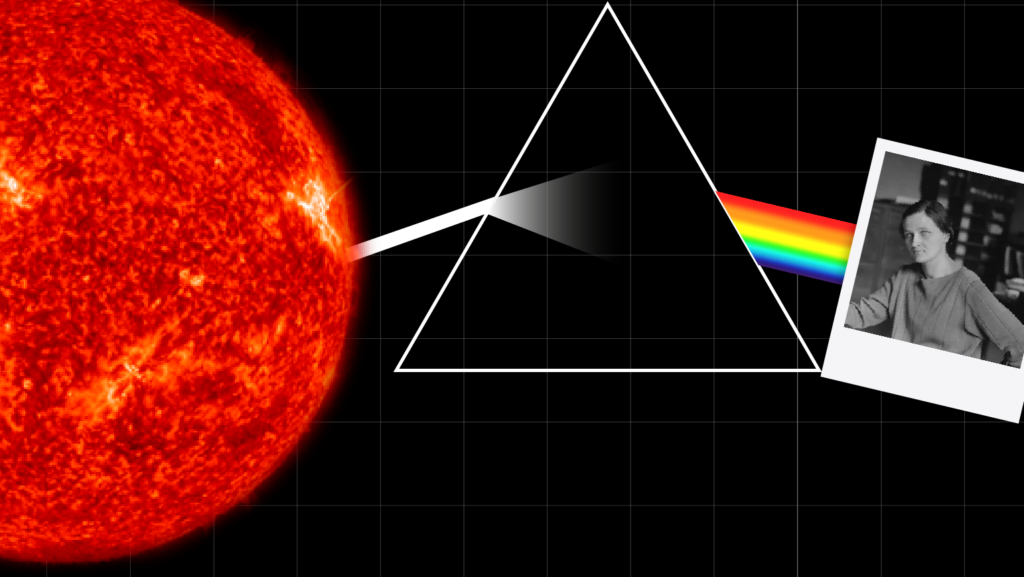Studying colors and lights is something that is not only useful when you are editing a photo in Photoshop, a video or creating a logo. The study of these items is something much deeper, ranging from small emotions in our subconscious to great discoveries about stars and galaxies. One of the discoveries about colors and lights is related to a woman who revolutionized the world of astronomy and left a huge legacy on the role of women in science.
In 1900, Cecilia Payne was born in England. At a young age, she studied botany, physics and chemistry at the renowned University of Cambridge, where she saw a lecture on the eclipse of the sun and fell in love with astronomy. Despite finishing her studies, she did not receive a diploma, since at the time, the university only granted diplomas to men and without this document she could not continue her career as a scientist, only as a professor. That’s why she moved to the US, where she studied at Harvard University. It was in this country that she made her main discovery.
In the past, scientists believed that the Sun and other stars had a composition similar to that of the Earth:
We can do similar things in our daily lives through a spectrograph, an object that scatters the light it receives like the famous prism on the Pink Floyd album cover:

Cecilia used a spectroscope, a version of the spectrograph used in astronomy for the same purpose of scattering light. When white light comes into contact with the object, the result is this:
However, in one of her experiments, she had the idea of putting a hydrogen gas between the light and the spectroscope and the light produced looked like this:
There were little lines called Absorption Rays where there was no light. This means that the gas did not let certain types of light through. After this discovery, Cecília decided to test with other gases such as helium:
With that in mind, the scientist came to the conclusion that it might be possible to know the composition of stars by analyzing the light emitted by them and comparing it with the analysis of gases, since if a star had hydrogen, for example, its atmosphere would absorb part of light creating the Rays of Absorption.
So Cecilia decided to observe how the light of each star reacted with the spectroscope and started with the closest of all the stars: the sun.
She began to compare sunlight with the effect of lights affected by gases and the result was historic:
Sunlight is a mixture of the lights affected by hydrogen and helium, that is, the atmosphere of the sun is composed predominantly of helium and hydrogen, completely different from anything that was believed until then.
This discovery paved the way for hundreds of research that allowed not only to discover the composition of the atmosphere of several stars, but also other information such as their temperature.
However, Cecilia Payne had another big challenge. Research that reported that the science of the time was wrong already caused suspicion, and that was even more difficult when it came from a woman. Cecilia had a hard time getting the scientific community to give credibility and visibility to her achievements. She published her paper in 1925 but it was not accepted by her boss Harlow Shapley, who showed the paper to Henry Russell, a well-known astronomer at the time. Russell found Payne’s research inconclusive and she was forced to state that her results did not lead to any true conclusions. However, four years later, Henry Russell reported that everything the scientist had discovered was true, and that the science of the time was indeed wrong.
Today, Cecilia Payne is credited with discovering the real information on the composition of the sun and an inspiration to generations of women in science.


